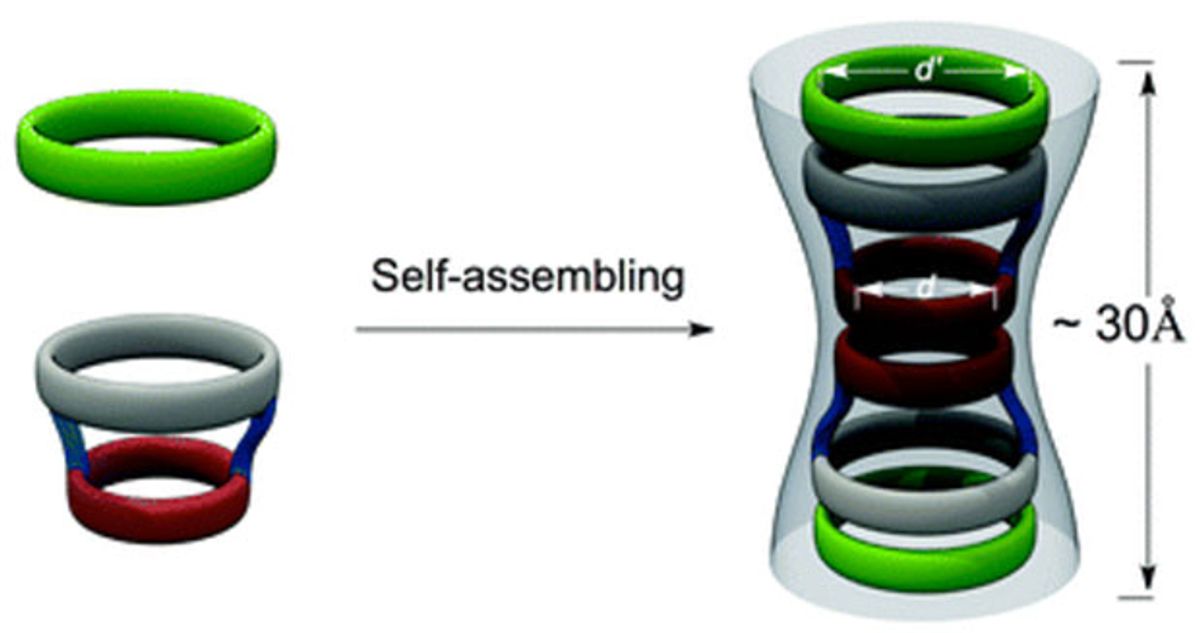While the prospects of molecular nanotechnology—the catch-all term for molecular manufacturing in which nanoscale machines are programmed to build macroscale objects from the bottom up—has remained mostly in the realm of science fiction, the awarding of last year’s Nobel Prize in chemistry to a trio of scientists who pioneered the development of nanomachines has buoyed hope that at least we should begin to see more research in the field.
More of this research is already trickling in since the Nobel Prize announcement. Two teams of researchers from the University of Santiago de Compostela (USC) in Spain have cited this most recent Nobel Prize as a context for their work in developing self-assembling materials based on peptides (compounds consisting of two or more amino acids linked together in a chain) that can stack themselves on top of each other to form nanotubes.
In two studies—one described in the Journal of the American Chemical Society(JACS) and the other in the journal Nanoscale—separate teams of researchers under the supervision of USC professors Juan R. Granja and Manuel Amorín observed the synthesis of self-assembling materials based on cyclic peptides that, under the right conditions, can stack, or self-assemble, into very particular shapes.
In the research upon which the JACS paper was based, the peptides formed into a capsule that can selectively recognize a specific type of ligand (a substance that forms a biomolecule) based on its shape, size and functional group. Depending on what the ligand is, the peptide capsule will capture it.
While being able to recognize these three characteristics of a ligand is not so usual, the capsule has three different reversible bonds in its formation. These types of bonds can be used to trigger the liberation of the confined molecule when conditions change. In addition, the amino acid used in the capsule can be modified without affecting the encapsulation properties, opening up the opportunity to target the capsule to specific cellular receptors. Also the peptide character could provide some biocompatibility. All of this points to a potential use as some kind of drug delivery tool.
In the other research, described in Nanoscale, the researchers were able to shape a carbon nanotube into Venturi tubes that are used for constraining fluid long enough to be measured. The researchers were able to achieve this shape by covalently linking two cyclic peptides of different size.
While the formation of carbon nanotubes is obviously not dependent upon peptides operating as nanoscale machines, this particular shape is unique.
“The synthesis of carbon nanotubes with this shape has not yet been described,” explained Granja in an e-mail interview with IEEE Spectrum. “It is still quite complex to control all the structural properties of the carbon nanotubes (diameter, length, and the way the graphene sheet is wrapped).”
Granja points out that that never before have carbon nanotubes been prepared by the self-assembling of smaller components. “In fact, this is one of the advantages of the peptide nanotubes,” Granja says. “This method allows the precise control of the nanotube diameter,”
While capsules that can identify and contain molecules and serve as nanoscale Venturi tubes sound like they are a bit more applications-oriented than nanocars, it all still seems pretty far removed from the day when engineers are able to watch as nanomachines build a macroscale car from the bottom up. So where are we on that timeline, especialy now that the Nobel committee has shined a light on molecular manufacturing?
Granja does see USC’s most recent work providing a small contribution to the development of the future components of complex molecular machines, but concedes that we are still far away from the development of programmable machines that can carry out specific complex functions programmed by the inventors.
Nonetheless, there are some clear landmarks lying ahead that we should be keeping an eye on as signs of progress, according to Granja.
“The design of artificial ribosomes to synthesize any type of complex biopolymer with similar efficiency and activity of the natural ribosome should be one of the big goals,” said Granja. “The construction of synthetic ion channel pumps must be another future goal. The final dream should be that the molecular machines should be able to generate under specific conditions from smaller components to carry out the work.”
While these incremental steps remain pretty far from the self-repairing machines envisioned by Eric Drexler in his book “Engines of Creation: The Coming Era of Nanotechnology”, Granja believes these steps are what will eventually lead us there. One of the things that seems to be increasingly clear is that nanomachines are looking to be more biological than machine-like bots, just as Richard Jones of the University of Sheffield suggested nearly a decade ago here on the pages IEEE Spectrum.
Along this bio-bot line of research, Granja believes that a lot of excellent work has been carried out since the pioneering work of professors Bern Feringa, Jean-Pierre Sauvage, and Sir J. Fraser Stoddart, last years Nobel Laureates.
While Granja believes his group’s most recent contributions to the field are modest, he does see the Venturi-like nanotubes research contributing ultimately to the development of ion channels through molecular manufacturing. To date, these ion channels, which can be used to transmit electrical signals, have only been fabricated from the top down, often using semiconductor manufacturing techniques. If they could develop a way to make them from the bottom up, using molecular manufacturing, it could lead to a new era in which these devices could be fabricated more precisely and deliver better performance.
Dexter Johnson is a contributing editor at IEEE Spectrum, with a focus on nanotechnology.



